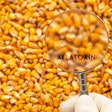
One additional state has reported deoxynivalenol (DON) in winter wheat, and the U.S. has seen its first confirmed report of DON in barley this harvest season, according to Neogen’s Monday Mycotoxin and Crop Report from July 23.
New Jersey has a confirmed report of DON in winter wheat. This is in addition to previous reports of DON in winter wheat from Michigan, Pennsylvania, Indiana, North Carolina, Maryland, Delaware, Tennessee, Virginia and Illinois.
The first report of DON in barley came from Pennsylvania.
Neogen said dry conditions and warm temperatures increase the risk of aflatoxin development in crops, and excess rain during pollination can increase DON or zearalenone risk.
Crop progress
Seventy-four percent of winter wheat has been harvested, three points ahead of the five-year average.
Barley is 90 percent headed out, 12 points ahead of the five-year average. Eighty-five percent of barley is in good to excellent condition, while 3 percent is in poor to very poor condition.
Sixty-three percent of corn is in the silking stage, up 25 points in a week and 26 points ahead of the five-year average. Seventy-two percent of corn is in good to excellent condition, and 9 percent is in poor to very poor condition. States with the highest poor to very poor ratings are Texas, North Carolina, Missouri, Michigan and Kansas.
Spring wheat is 93 percent headed, which is eight points ahead of the five-year average. Eighty percent of spring wheat is in good to excellent condition, while 5 percent is in poor to very poor condition.
Oats are 96 percent headed, one point ahead of the five-year average. Seventy-one percent of oats are rated in good to excellent condition, while 7 percent is in poor to very poor condition. Sixteen percent of oats are harvested, which is two points ahead of the five-year average.
















